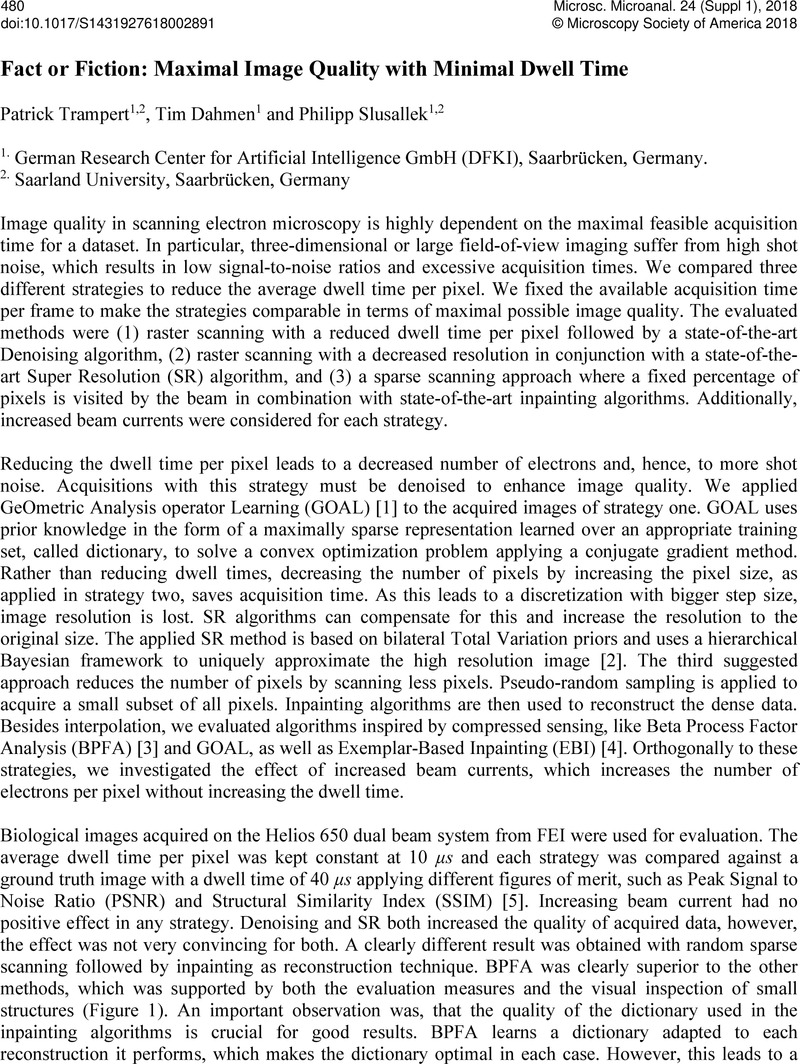No CrossRef data available.
Article contents
Fact or Fiction: Maximal Image Quality with Minimal Dwell Time
Published online by Cambridge University Press: 01 August 2018
Abstract
An abstract is not available for this content so a preview has been provided. As you have access to this content, a full PDF is available via the ‘Save PDF’ action button.

- Type
- Abstract
- Information
- Microscopy and Microanalysis , Volume 24 , Supplement S1: Proceedings of Microscopy & Microanalysis 2018 , August 2018 , pp. 480 - 481
- Copyright
- © Microscopy Society of America 2018
References
[5] Trampert, P., et al
“How should a fixed budget of dwell time be spent in scanning electron microscopy to optimize image quality?”, Ultramicroscopy, under revision.Google Scholar
[6] Research has been supported by Thermo Fisher Scientific. The authors thank the DFKI GmbH for additional funding and for providing the necessary infrastructure.Google Scholar


